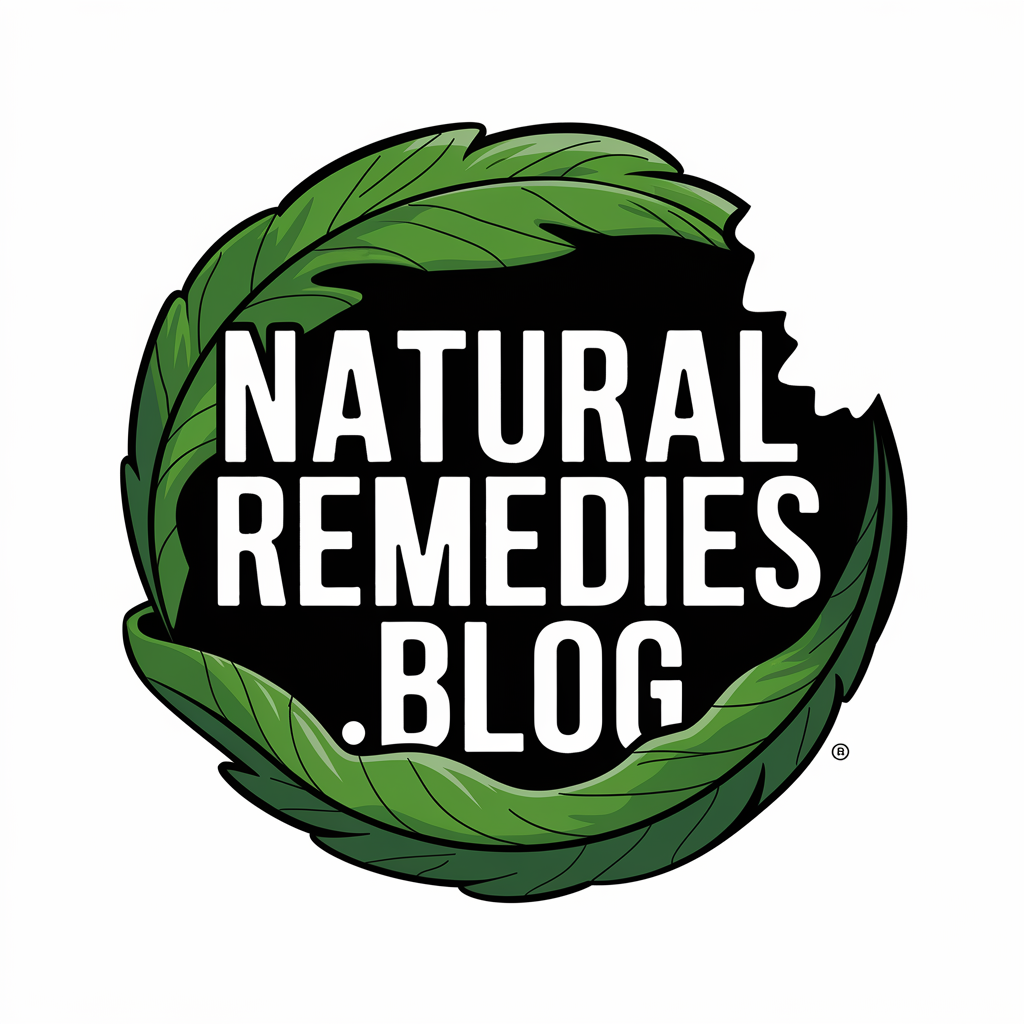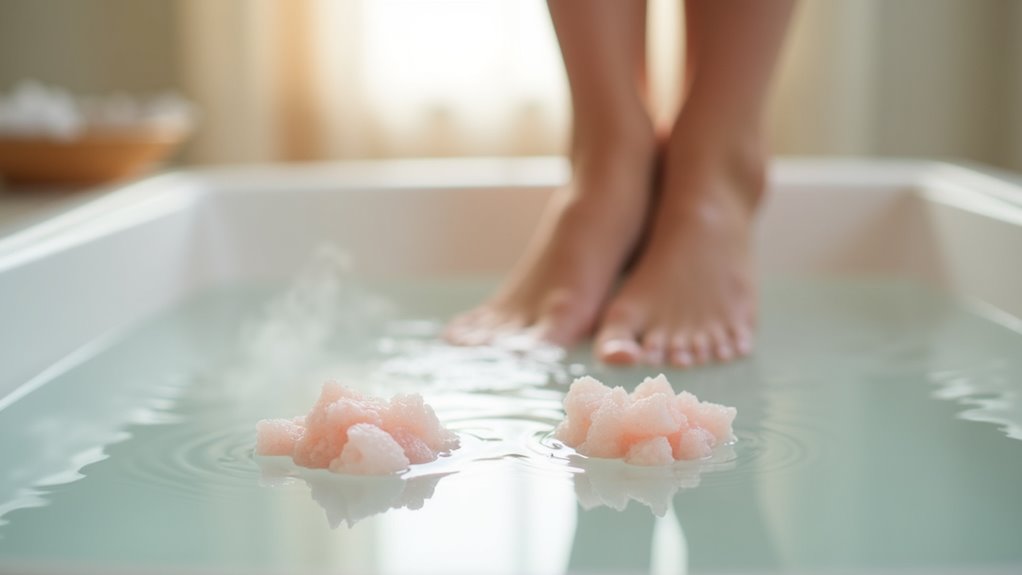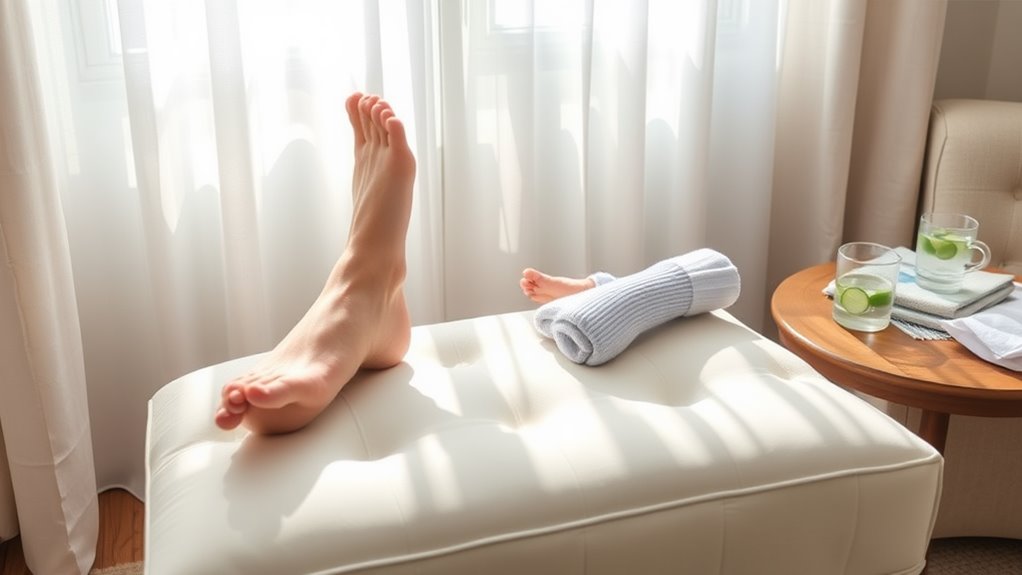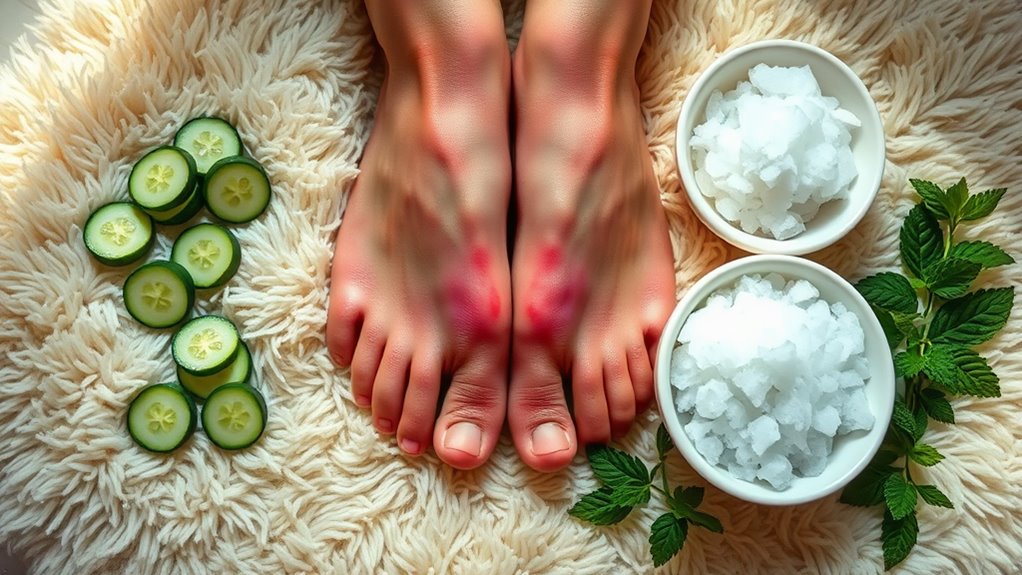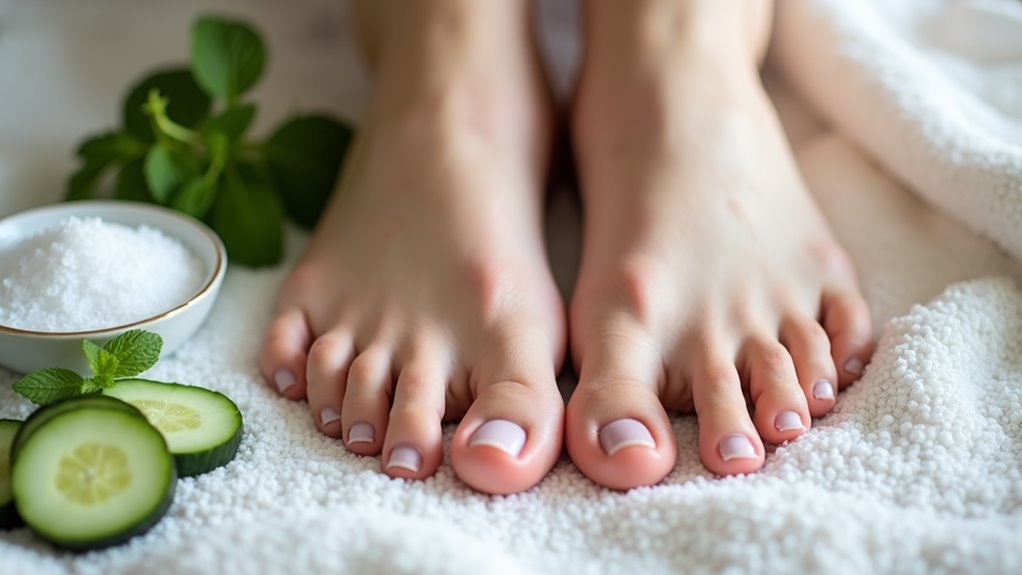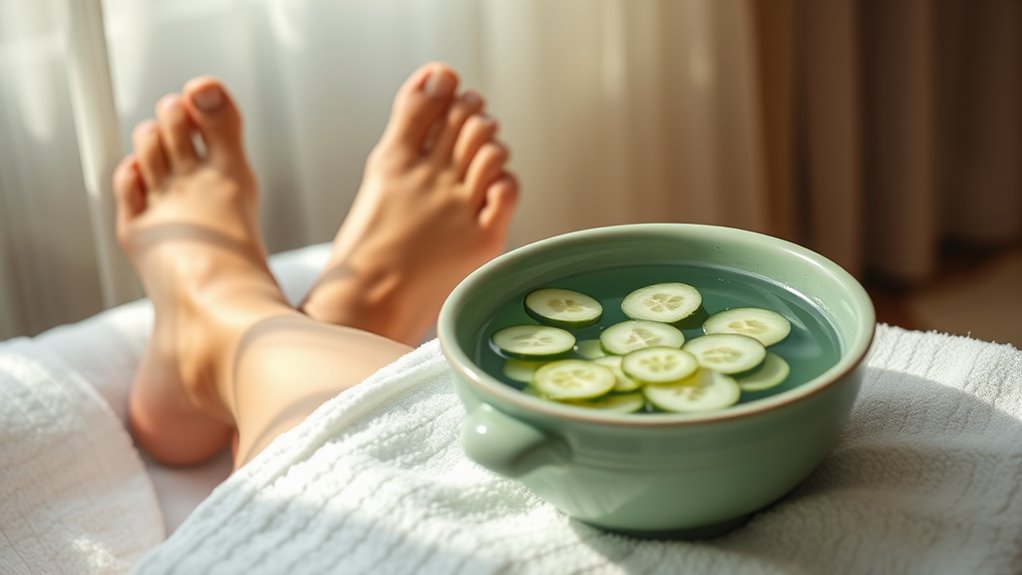Foot Pain. Try This Simple Remedy You Can Make at Home
You can create an effective foot pain remedy by combining cayenne pepper, ginger powder, and turmeric with peppermint and eucalyptus essential oils. Apply this natural analgesic blend using circular motions for 3-5 minutes, focusing on affected areas. The capsaicin and curcumin compounds provide anti-inflammatory benefits while promoting circulation and tissue repair. For optimal results, utilize this treatment before bed and upon waking. Discover specific measurements and advanced application techniques to maximize therapeutic benefits.
Understanding Common Causes of Foot Pain
Three primary categories of foot pain typically present in clinical settings: mechanical, inflammatory, and neurological conditions.
You’ll find mechanical issues stem from structural abnormalities like fallen arches, plantar fasciitis, or biomechanical misalignment. Inflammatory conditions include arthritis, bursitis, and tendinitis, while neurological manifestations often present as peripheral neuropathy or nerve entrapment syndromes.
Before attempting foot remedies, it’s crucial to identify the underlying etiology of your discomfort. Your symptoms may indicate tissue damage, nerve compression, or systemic conditions that require specific therapeutic interventions. Understanding the root cause ensures appropriate treatment selection.
Benefits of Natural Pain Relief Solutions
Natural pain relief solutions offer distinct therapeutic advantages for managing foot discomfort while minimizing potential adverse effects associated with pharmaceutical interventions.
You’ll find these holistic approaches particularly beneficial for addressing chronic podiatric conditions.
-
Botanical analgesics like arnica and capsaicin provide localized anti-inflammatory effects without systemic complications.
-
Hydrotherapy techniques enhance circulation and reduce edema through controlled temperature modulation.
-
Essential oil applications stimulate endogenous pain-modulating mechanisms while promoting tissue repair.
-
Natural compounds support your body’s inherent healing processes, reducing dependency on synthetic medications.
These therapeutic options can effectively complement your existing treatment protocol while maintaining optimal physiological function.
Regular use of compression socks during daily activities can significantly improve circulation and reduce foot swelling.
Essential Ingredients for the Home Remedy
To prepare this therapeutic foot remedy, you’ll need common pantry staples including Epsom salts, baking soda, and apple cider vinegar, along with an airtight glass or plastic storage container. The active therapeutic components should include essential oils with anti-inflammatory properties, such as lavender, peppermint, or eucalyptus, combined with carrier oils like coconut or jojoba. For optimal efficacy and preservation of the medicinal compounds, ensure your storage vessel is sterilized, moisture-free, and equipped with an hermetic seal. Adding original yellow Listerine provides powerful antifungal and antibacterial properties that combat common foot ailments.
Basic Kitchen Items Needed
Most effective foot pain remedies can be prepared using readily available kitchen staples. To create this therapeutic solution, you’ll need specific items from your pantry and cabinet to ensure optimal efficacy.
- Epsom salt (magnesium sulfate) – pharmaceutical grade
- Mixing bowl – non-reactive stainless steel, 2-quart capacity
- Digital kitchen thermometer for precise water temperature
- Measuring implements (metric or standard)
These fundamental components enable proper preparation of the analgesic foot soak. Each item serves a distinct therapeutic purpose, contributing to the remedy’s effectiveness in reducing plantar fasciitis, metatarsalgia, and other podiatric conditions.
Natural Pain-Fighting Ingredients
Several potent botanical compounds form the foundation of this therapeutic foot remedy, each selected for their clinically-validated analgesic properties.
You’ll need cayenne pepper, which contains capsaicin for pain relief and circulation enhancement.
Include ginger root powder for its anti-inflammatory compounds, particularly gingerols and shogaols.
Add turmeric powder, containing curcumin, a proven natural analgesic.
Incorporate peppermint essential oil for its menthol content, which provides cooling pain relief and increases blood flow.
Finally, add eucalyptus oil, rich in eucalyptol, for its potent anti-inflammatory and analgesic effects.
Storage Container Requirements
Since proper storage plays a vital role in preserving therapeutic potency, you’ll need an airtight glass container with a minimum capacity of 8 ounces (240mL) to house your foot pain remedy.
For optimal therapeutic efficacy and shelf stability, your container must meet these essential specifications:
-
Amber-tinted borosilicate glass to prevent UV degradation of photosensitive compounds
-
Hermetically-sealed lid with inert silicone gasket to maintain compound integrity
-
Non-reactive interior surface to prevent chemical interactions with active ingredients
-
Wide-mouth design (>2 inches/5cm diameter) for easy compound dispensing and cleaning
Sterilize the container before use by autoclave or chemical disinfection.
Step-by-Step Preparation Guide
Preparing an effective foot pain remedy requires gathering specific supplies and following proper therapeutic protocols.
You’ll need to measure 2 cups of Epsom salt and dissolve it completely in warm water (98-104°F). Add 10-15 drops of tea tree essential oil for its anti-inflammatory properties. Fill your container to the indicated line, ensuring proper dilution ratios.
Verify water temperature with a thermometer before use. Mix the solution thoroughly using a non-reactive stirring implement. Test a small amount on your inner wrist to check for adverse reactions.
The preparation should appear clear and free of undissolved particles.
For enhanced therapeutic benefits, consider adding 1 cup of blue or amber Listerine to target odor-causing bacteria and provide soothing relief.
Proper Application Methods
To effectively apply your prescribed foot pain treatment, you’ll need to follow a systematic therapeutic protocol that maximizes absorption and efficacy.
The optimal application times are pre-sleep and post-awakening, when your feet’s metabolic processes are most receptive to topical interventions.
For maximum therapeutic benefit, incorporate the treatment into your daily podiatric care regimen, maintaining consistent intervals between applications.
Application Steps and Tips
Successful treatment of plantar fasciitis and other foot conditions requires precise application techniques for optimal therapeutic benefit.
To achieve maximum therapeutic efficacy, follow these essential application protocols:
-
Apply therapeutic agents in a circular motion using moderate pressure across the plantar fascia, focusing on areas of maximum tenderness.
-
Maintain continuous contact for 3-5 minutes while performing deep tissue manipulation to enhance absorption.
-
Elevate affected foot 15-20 degrees during application to optimize circulation and reduce edema.
-
Secure treatment area with compression bandage post-application to maintain therapeutic contact and protect treated tissues.
Best Times for Treatment
Optimal timing plays a vital role in maximizing the therapeutic benefits of foot pain treatments.
You’ll achieve the best results by applying your remedy immediately after bathing, when your skin’s pores are most receptive to absorption.
For plantar fasciitis, treat before bed and first thing in morning when inflammation peaks.
Apply treatment post-activity for exercise-induced discomfort.
If you’re experiencing diabetic neuropathy, schedule applications between glucose monitoring sessions.
For arthritis sufferers, coordinate treatment with your anti-inflammatory medication schedule.
Those with edema should elevate feet during application, preferably in the evening when fluid retention is highest.
Best Times to Use the Remedy
Timing plays a crucial role in maximizing the effectiveness of foot pain remedies. For optimal therapeutic benefits, apply the treatment during specific intervals that align with your physiological cycles and activity patterns.
-
Post-ambulatory periods, when plantar fascia inflammation peaks after prolonged standing or exercise
-
Pre-sleep application to capitalize on the body’s natural healing processes during rest
-
First thing in morning to address nocturnal serum uric acid elevation
-
Following acute trauma or strain, within 24-48 hours of onset
These strategic timing windows enhance analgesic absorption and promote faster recovery through targeted intervention during peak inflammatory responses.
Just as with pediatric cough remedies, consistency in treatment routines supports the healing process and can significantly improve recovery outcomes.
Additional Tips for Maximum Relief
To optimize therapeutic outcomes for foot pain management, you’ll need to incorporate specific preventive and remedial measures into your treatment protocol.
Begin with targeted stretching exercises for the plantar fascia and Achilles tendon both prior to and following physical activity, while ensuring your footwear provides adequate arch support and cushioning appropriate for your foot mechanics.
When acute symptoms present, apply cold compression therapy for 15-20 minutes at 2-3 hour intervals to reduce inflammation and minimize tissue damage.
Consider using an Epsom salt bath to draw out excess fluid and relax tense muscles in your feet.
Stretching Before and After
While foot pain can be debilitating, implementing proper stretching techniques before and after physical activity significantly reduces discomfort and promotes faster recovery.
Target key muscle groups and connective tissues through these evidence-based stretching protocols:
- Perform plantar fascia stretches by gently pulling your toes toward your shin while maintaining ankle dorsiflexion.
- Execute Achilles tendon elongation through controlled heel drops on a step.
- Utilize a tennis ball for myofascial release of the arch and metatarsal region.
- Practice toe splay exercises to enhance intrinsic muscle flexibility and joint mobility.
These techniques enhance blood flow, reduce inflammation, and optimize biomechanical function.
Monitor Your Footwear Choice
Proper footwear selection complements a comprehensive stretching routine and serves as a primary factor in foot pain management.
You’ll need to assess your footwear’s arch support, heel cushioning, and toe box width. Select shoes with appropriate orthopedic features that align with your foot’s biomechanical needs.
Don’t wear shoes past their structural integrity. Replace athletic footwear every 400-500 miles or when you observe visible midsole compression.
For daily wear, evaluate shoes every six months for wear patterns. Consider custom orthotics if you have specific podiatric conditions like plantar fasciitis or metatarsalgia that require additional support.
Use Cold Compression Therapy
Cold compression therapy offers significant analgesic benefits for acute foot pain and post-activity inflammation.
You’ll maximize therapeutic outcomes by implementing proper cold compression techniques using medical-grade ice packs or a specialized cryotherapy system.
- Apply cold compression for 15-20 minutes at 2-3 hour intervals during the acute phase.
- Maintain a protective barrier between the ice pack and skin to prevent tissue damage.
- Position your foot elevated above heart level during treatment to optimize lymphatic drainage.
- Monitor skin response and discontinue if numbness, excessive discoloration, or discomfort occurs.
This evidence-based intervention helps reduce edema, decrease inflammatory mediators, and modulate pain signals.
Prevention and Self-Care Practices
To minimize the risk of developing foot pain, implementing preventive measures and regular self-care practices can significantly reduce your likelihood of experiencing acute or chronic discomfort. You’ll need to maintain proper foot biomechanics and ergonomic support while incorporating targeted stretching exercises.
| Prevention Strategy | Clinical Benefit |
|---|---|
| Orthotic Support | Corrects pronation/supination |
| Weight Management | Reduces metatarsal pressure |
| Proper Footwear | Optimizes gait mechanics |
| Regular Stretching | Enhances fascia flexibility |
Monitor your foot mechanics during physical activities and ensure you’re wearing appropriate footwear that provides adequate arch support and cushioning. Don’t ignore early warning signs of discomfort. Since low-impact activities like pool walking can effectively support weight management goals, consider incorporating water-based exercises into your routine.
When to Seek Medical Attention
While self-care practices can address many foot ailments, certain symptoms warrant immediate professional evaluation.
You’ll need to consult a podiatrist or healthcare provider if you experience any of these conditions:
-
Severe pain that persists for more than 48 hours, accompanied by significant swelling and limited mobility
-
Signs of infection, including redness, warmth, fever, or purulent drainage from wounds
-
Sudden onset of numbness, tingling, or burning sensations that may indicate nerve compression or diabetic neuropathy
-
Visible deformities, unexplained bruising, or changes in skin color, particularly if you have underlying conditions like diabetes
Additionally, watch for one-sided leg swelling which could indicate a dangerous blood clot requiring emergency care.
Storage and Shelf Life of the Remedy
Proper storage conditions play a critical role in maintaining the therapeutic efficacy of foot pain remedies. You’ll need to store your preparation in an airtight, amber glass container to protect it from UV degradation and oxidative stress.
| Storage Parameter | Optimal Condition | Duration |
|---|---|---|
| Temperature | 15-25°C (59-77°F) | 6 months |
| Light Exposure | Minimal/Dark | Ongoing |
| Humidity | Below 60% RH | Ongoing |
| Container Type | Amber Glass | Replace yearly |
| Location | Cool, dry area | Permanent |
Monitor for changes in color, consistency, or odor. If you notice any alterations, discontinue use immediately and prepare a fresh batch.
